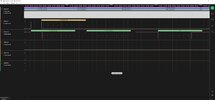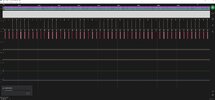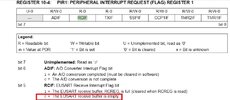camerart
Well-Known Member
Hi M,Yes, everything will do it's thing and when it's complete it sets it's interrupt flag and generates an interrupt. If while a byte (from RS232) is being loaded into memory a timer 2 interrupt occurs then it'll interrupt once the current interrupt has finished. As all these things are happening at 8,000,000 instructions per second then nothing gets missed. An interrupt routine would have to be over 500uS (4000 instructions) long for an interrupt to be missed.
Mike.
My mate has the view, that as it was previously, with 18F4431 PORTB outputting BYTE, BYTE BYTE, in parallel to the SERVOS would be fine.
I explained the external 'shift register' method, which took a bit of explaining, and reluctantly, he accepted it.
I explained that I was going to try this method first, then perhaps compare it with the PORT method later.
I have your explanations about the CLK timings and have read them a few times, and think I get the instruction speed, and INT timings.
We then went on to precise timings, and what happens if 2xINTs arrive at once, the priorities and how they time into each other.
I posted on AAC, but hasn't been looked at, so we may be on our own?
C




